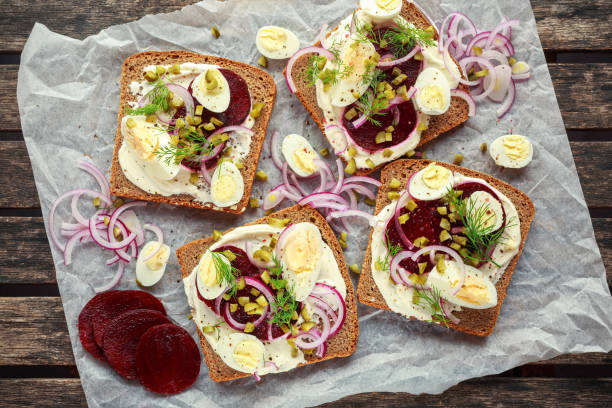
Danish meals culture has very long been defined by its simplicity, seasonality, and luxury. From rustic breads to hearty stews, conventional Danish Delicacies was shaped by necessity and native sources. But in new many years, Denmark has also emerged as a global culinary innovator. This combination of aged and new can make the state’s foods scene amongst Europe’s most compelling. Let us check out classic food stuff culture in Denmark with me, Gustavo Woltmann.
Classic Roots
Conventional Danish food items is grounded in simplicity, resourcefulness, and a strong connection on the seasons. For hundreds of years, Denmark’s cold local weather and rural Life style formed the way folks cooked and ate. Foods needed to be filling, useful, and designed with substances that were readily available or simple to protect.
On the list of cornerstones of conventional Danish cuisine is rugbrød, a dense, sour rye bread that serves as The bottom For numerous foods, especially smørrebrød, or open-confronted sandwiches. These are generally topped with combos of pickled herring, liver pâté, boiled eggs, roast beef, and remoulade. Each layer is cautiously placed, usually with awareness to flavor, coloration, and texture.
Meat and potatoes variety another central A part of the Danish diet program. Dishes like frikadeller (pan-fried meatballs), flæskesteg (roast pork with crispy skin), and stegt flæsk med persillesovs (fried pork belly with parsley sauce) are countrywide favorites. Stews, soups, and porridges—which include gule ærter (break up pea soup) or øllebrød (a porridge comprised of rye bread and beer)—replicate the country’s frugal use of leftovers and basic pantry staples.
Due to lengthy winters, preservation was important. Pickling, curing, and cigarette smoking allowed Danes to shop fish and meat for months. Pickled cucumbers, red cabbage, and herring are still typical on dinner tables these days.
Dairy goods like cheese and butter can also be conventional and widely eaten. Seasonal substances for instance root veggies, apples, and berries formed quite a few dishes, particularly in desserts like æblekage (apple cake) or risalamande (rice pudding with cherry sauce), a Christmas staple.
Eventually, standard Danish foods isn't flashy or extremely elaborate. It’s straightforward, hearty, and manufactured to carry ease and comfort—perfect for the very long, cold days that when outlined Significantly of existence in Denmark.
Meals as a Social Working experience
In Denmark, foodstuff isn’t nearly eating—it’s about connecting. Foods are frequently shared occasions that replicate the value Danes place on togetherness, or hygge. Whether it’s an informal weekday dinner with family members or a lengthy weekend brunch with close friends, meals performs a central part in Danish social life.
The strategy of hygge—creating a cozy, heat atmosphere—generally revolves close to food stuff. Candlelit dinners, home made cakes, and slow-cooked stews all lead to that sensation. It’s not pretty much what’s within the plate, but who’s within the table. Foods are noticed to be a time for you to decelerate, speak, and revel in the moment.
Community Areas also reflect this Frame of mind. Food halls, marketplaces, and community kitchens became popular in metropolitan areas, encouraging people today to gather, share, and examine different flavors. Road food items festivals and pop-up dining activities are popular, giving locals a style of both of those international and experimental Danish Delicacies.
In workplaces, shared lunches are a day-to-day plan. Most offices Have a very canteen wherever employees consume collectively, reinforcing a society of equality and community. Even faculties give foods that target balance, nutrition, and shared activities.
Food stuff is also Portion of Danish celebrations and traditions. From Christmas lunches stuffed with pork roast and rice pudding, to summertime picnics with chilly potato salad and strawberries, the calendar is stuffed with food-centered moments that bring folks collectively.
Over-all, food items in fashionable Denmark goes far beyond diet or style. It’s tied check here to identification, belonging, And the way men and women relate to each other. As taking in practices transform, this social aspect stays solid—linking the aged with the new in a single of Europe’s most considerate and evolving food stuff cultures.
The Increase of latest Nordic Delicacies
In the early 2000s, Danish food society underwent a change While using the delivery of The brand new Nordic Cuisine movement. It was more than simply a craze—it had been a culinary revolution. Chefs and meals thinkers came together to rethink what Scandinavian food stuff might be, having a concentrate on purity, simplicity, and sustainability.
The turning point arrived in 2004 when Danish chef René Redzepi and foodstuff entrepreneur Claus Meyer co-Started the restaurant Noma in Copenhagen. Its philosophy? Use only substances with the Nordic area. That meant no olive oil, no lemons, no tropical spices. Instead, cooks turned to community sea buckthorn, foraged mushrooms, herbs, and historical grains. Redzepi's creativity and determination to regional sourcing attained Noma multiple awards and international recognition. It redefined great eating in Denmark and impressed restaurants through the area.
New Nordic Cuisine emphasizes the necessity of being aware of exactly where your food stuff arises from. It really is about reconnecting Using the land and its purely natural rhythm. Wild herbs, seasonal veggies, fermented foods, and organic meat are central. The cooking model could be minimalist, but it's rooted in deep regard for components and mother nature.
This movement also served raise recognition of meals ethics in Denmark. Farmers, fishers, and foragers begun getting notice for sustainable methods. Area markets grew. University cafeterias and public kitchens even started adopting much healthier, fresher menus motivated by New Nordic beliefs.
Whilst regular Danish dishes nonetheless prosper, the rise of latest Nordic Delicacies has provided the state a modern identification on the worldwide foods phase. It brought satisfaction to area meals lifestyle and served merge age-old tactics with new creative imagination. These days, no matter if you’re eating in the great restaurant or purchasing in a farmers sector, the influence of latest Nordic imagining is easy to find out—and style.
Fashionable Food Tradition
Right now, Danish food items society demonstrates a blend of tradition, innovation, and international affect. Even though traditional meals like smørrebrød, frikadeller, and herring are still Portion of everyday life, modern-day Danes have embraced new flavors, dietary patterns, and food stuff trends. The shift is especially visible in urban areas like Copenhagen and Aarhus, exactly where diversity and creativity shape every day menus.
Worldwide cuisines have found a powerful presence. Sushi, pizza, Thai curries, and Middle Eastern kebabs are as common as vintage Danish dishes. Immigration and journey have opened up palates, and lots of Danes now cook with components and spices that were once uncommon in the location. Supermarkets and places to eat have responded by featuring broader picks of world items.
Wellness is another significant focus. More and more people are having vegetarian or vegan foods, and there's expanding awareness of natural and organic and sustainable food decisions. Labels like “økologisk” (natural and organic) are reliable and extensively recognized. Farm-to-desk beliefs, sparked by the New Nordic Delicacies motion, now influence everyday cooking. Domestically sourced make, seasonal ingesting, and reduced food stuff squander are A part of how people give thought to foodstuff.
Cafés and bakeries reflect this cultural Mix way too. A typical Danish café may perhaps serve an oat milk latte, an open-confronted rye sandwich, and also a gluten-free of charge pastry. In the meantime, foodstuff shipping and delivery products and services and apps have made eating much more effortless, especially for youthful pros and families.
Social websites also plays a task in shaping modern preferences. Danish influencers, cooks, and home cooks share recipes and foods on the internet, promoting almost everything from conventional baking to fusion cooking. The end result is a energetic, evolving foods scene.
To put it briefly, modern day Danish food stuff tradition is dynamic. It respects its roots when adapting to new lifestyles and values. It’s regional and global, wellness-concentrated and indulgent, quick-paced and considerate—all at once.
Conclusion
Danish foodstuff society is actually a abundant mix of background, innovation, and Local community. From hearty traditional dishes like smørrebrød for the refined approaches of New Nordic cuisine, Denmark’s culinary landscape carries on to evolve. What continues to be constant will be the deep link between foods and social lifetime. Whether shared in the home, in the sector, or during a festive gathering, meals carry persons alongside one another. The Danish focus on high quality, seasonality, and togetherness helps make their foodstuff lifestyle both of those simple and significant. As global interest in sustainable and mindful consuming grows, Denmark’s strategy offers a useful example of how tradition and modern day values can blend superbly.
 Hallie Eisenberg Then & Now!
Hallie Eisenberg Then & Now! Mason Gamble Then & Now!
Mason Gamble Then & Now! Val Kilmer Then & Now!
Val Kilmer Then & Now! Sydney Simpson Then & Now!
Sydney Simpson Then & Now! Erik von Detten Then & Now!
Erik von Detten Then & Now!